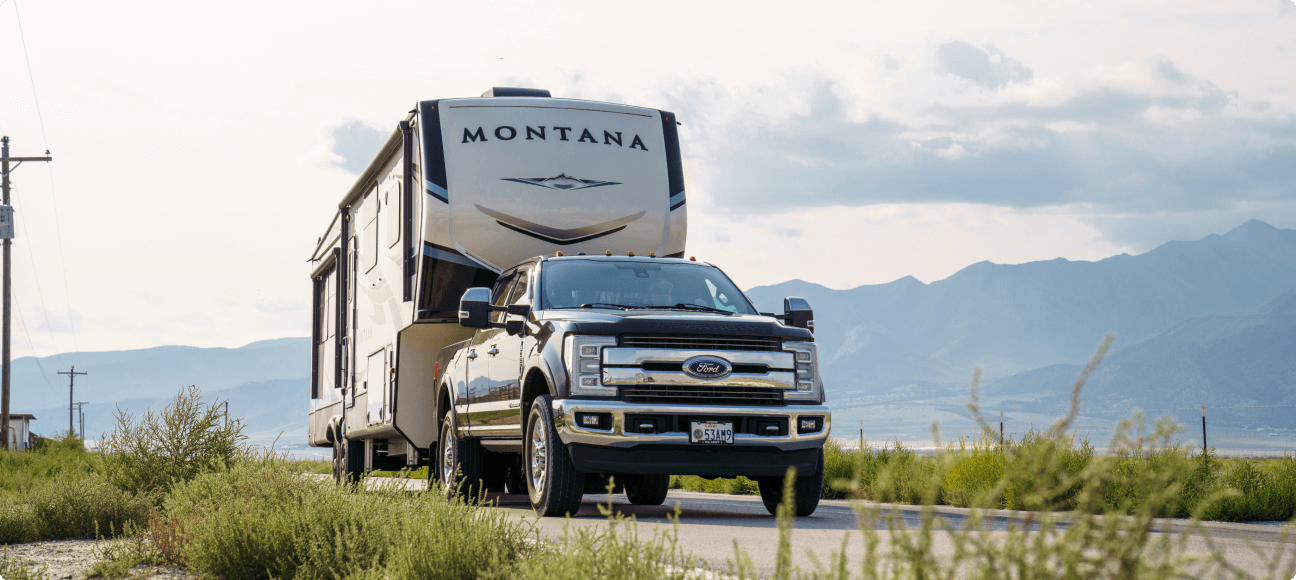There’s a different feeling in the vehicle as soon as a flat occurs on one of your tires. Whether the tire goes flat mid-drive or if you begin to move on a flat tire, you can immediately tell something isn’t right.
Flat tires are an inconvenience at best and a serious safety hazard at worst. Replacing them or repairing them is usually a dip into your wallet, too. The average cost to replace an automobile tire is $200, and the cost to replace an RV tire jumps to $500. Plus, the odds are high you will experience a flat: out of 230 million drivers in the US, approximately 220 million flat tires occur each year.
So what should you do if you experience a flat? Here we’re looking at the practical and preventative actions to take when it comes to flat tires.
My tire went flat while driving
Getting a flat tire while driving can be stressful. If you hit a road hazard and your tire suddenly deflates, you will immediately feel it in the wheel–a rumbling sensation and possibly a pull to one side or the other. Your first step is to gain or maintain control of the vehicle.
Driving on a flat tire can damage your wheel–an even more expensive repair–but you can’t simply full-brake in the middle of traffic when your tire goes flat. That could lead to a dangerous collision. Instead, try to reduce speed, turn on your emergency flashing lights, and pull to the side of the road at a safe location–preferably a spot still on pavement.
If possible, give yourself and a potential service tech the space needed to repair or replace the tire or tow your vehicle. But don’t sacrifice the health of your wheel for the perfect spot: get out of traffic and to the side as quickly as possible.
Assess the damage, option the spare tire
There are multiple ways your tire can go flat. Punctures, blowouts, valve-stem leaks, shoulder/sidewall damage–you need to determine what has caused the flat tire. If you hear a hissing noise from a still partially inflated tire, you should be able to identify the leak by keeping an eye out for stuck objects. Otherwise, inspect your tire for wear-and-tear, damage to the sidewall, visible puncture, or damage to the valve stem.
Some tire damage can be repaired with a tire repair kit you should always keep in your car or RV, while others require tire replacement. If your tire is repairable with a repair kit, you will need to have a portable air compressor on hand to refill the tire after a flat.
If you are unsure your tire can be repaired or lack the kit or air compressor to make the repair, your next option is to replace the flat tire with a spare. Most cars are at least equipped with a donut spare tire that should be driven on no more than fifty miles. Some RVs carry full spare tires, but not all of them. If you have a spare, go through the process of replacing a tire before a flat occurs. Practice replacing a tire to ensure you have the knowledge and equipment necessary. Otherwise, your next step is to call a roadside assistance provider like Good Sam Roadside Assistance. They will be able to help coordinate a tire replacement, repair, or tow to the nearest service shop, giving you peace of mind when you need it most.
Can I do anything to prevent flat tires?
Flat tires don’t always happen out of the blue. Preventative measures exist. And when flats do occur unexpectedly, you can take measures to avoid being stuck on the side of the road.
Practice awareness
Not all road hazards are avoidable, but some are. You should always practice awareness of your surroundings when driving. Pay attention to other cars, your car, the road’s condition, and potential road hazards. Avoid potholes and road debris when possible, as long as it doesn’t cause erratic driving that could lead to an accident.
Monitor tire condition
It’s important to replace your tires before they are at risk of going flat due to wear and tear. Don’t push your tire tread to the limit. If your tread depth measures 4/32 or less, it may be time to replace your tires. Also pay attention to the sidewall condition. If ever wires are showing through the tire, replace your tires immediately and don’t risk driving on them.
Low tire pressure
Low tire pressure is a leading cause of flat tires. Part of the reason for this is the build-up of heat that occurs due to increased friction when more surface area of the tire hits the pavement. This leads to compromised tire quality and can lead to a flat, not to mention reduced gas efficiency while the tire is still functional.
The Good Sam Tire & Wheel Protection Plan
Even with the right prevention and awareness, you could still be left with the high cost of paying for a flat–or multiple flats, in some cases. With the Good Sam Tire & Wheel Protection Plan, you get the assurance that you won’t have to pay for a flat caused by road hazards. And in the event of a flat, you don’t want to add a hefty bill on top of the inconvenience.
But why stop at not paying for a tire? With the Good Sam Tire & Wheel Protection Plan and the Good Sam Roadside Assistance plan, you get your tire or wheel replaced or repaired. With that kind of peace of mind, a flat tire becomes a lot less stressful, no matter where you are.

